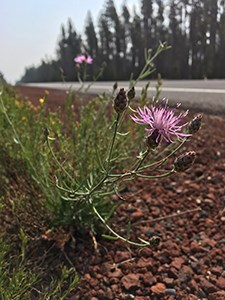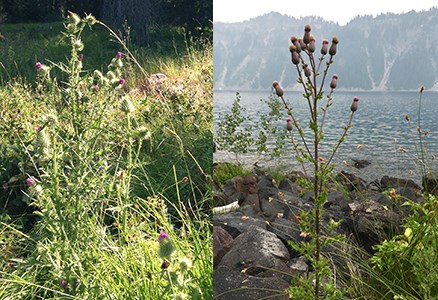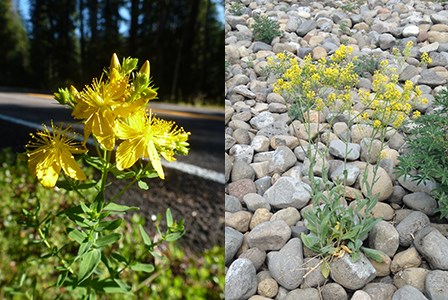
NPS Photo Before needing a rapid response or effective control measures the first goal of IVM is to prevent the introduction of non-native species. This protects and maintains the integrity of the park’s diverse native flora. While Crater Lake National Park is threatened by invasive plants, there are areas in the park that are still composed entirely of native plant species. The park’s high elevation and copious snowfall assist in minimizing human and natural disturbances that may introduce invasive plants with negative long-term impacts. 
NPS Photo A Few InvasivesDyer’s woad was first cultivated for its dye. It became invasive when introduced to western states as a contaminant in alfalfa seed.Canada thistle accidentally arrived through farm seed shipments as early as 1600. It crowds out native species reducing the yield of native plants.
Spotted knapweed was accidentally introduced into North America in contaminated alfalfa and clover seed in the late 1800s.
St. John's wort was Introduced as an ornamental and as a medicinal herb. It is toxic to cattle.
Bull thistle can form dense thickets, displacing native vegetation. Introduced around late 1800's and is now found in all 50 states.

NPS Photo The seeds of invasive plant species can “hitchhike” on your boots, clothing, gear, and even your pets! Help protect the Park’s native ecosystems by brushing seeds and soil off your footwear and equipment before leaving home. Boot brush stations are located at Cleetwood Cove, Garfield Peak, and at the south Pacific Crest Trail trailheads, giving trail-goers one last chance to brush any seeds or soil off of boots that may harbor invasive species. |
Last updated: March 25, 2019
